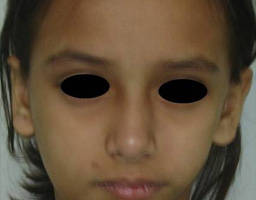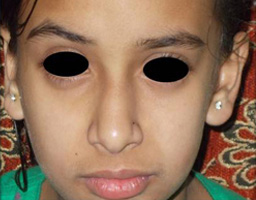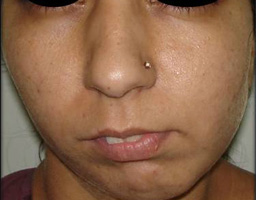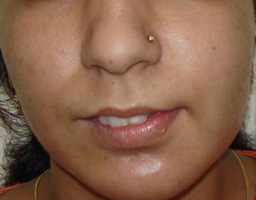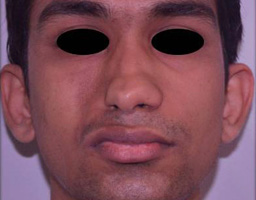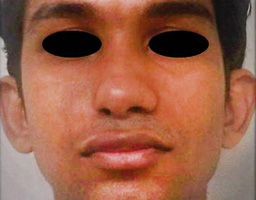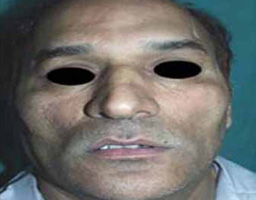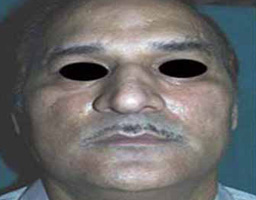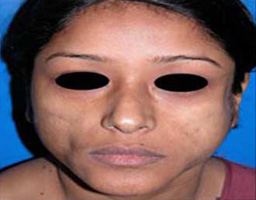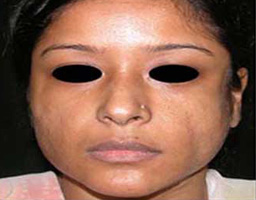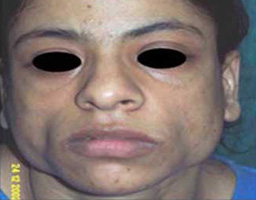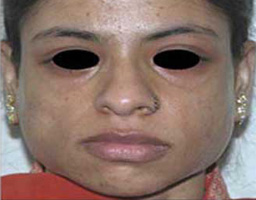Fat Grafting Treatment in Delhi
Are you dreaming of a perfect and curvaceous body shape or are you struggling with body contour deformities that make you feel self-conscious?
Look no further! SculptIndia is the best fat injection clinic in Delhi, can help you achieve your desired look with fat grafting treatment. This technique is commonly employed in cosmetic procedures, where fat is injected into the targeted area to augment volume, resulting in a safe, enduring, and authentic appearance.
Transform your body and achieve your dream body shape with the safe and effective fat grafting treatment offered by Dr. Vivek Kumar at SculptIndia Clinic in Delhi. Dr. Vivek Kumar is an experienced and skilled fat injection surgeon who specializes in removing excess fat from one area of your body and injecting it into another to contour and sculpt your body to your desired shape.
Say goodbye to your insecurities and body contour deformities that have been holding you back from feeling confident and comfortable in your own skin. Take the first step towards achieving your dream body by booking a consultation with Dr. Vivek Kumar today. Don’t let anything hold you back from living your best life.
What is Fat Injection or Fat Grafting Treatment in Delhi
Fat injection or fat grafting is a cosmetic treatment that involves removing fat from one area of the body and transferring it to another area to add volume and improve contours. In Delhi, this treatment is performed by plastic surgeons or dermatologists who have expertise in the procedure.
During the procedure, the surgeon will harvest fat from a donor area, typically the abdomen, hips, or thighs, using liposuction. The fat is then purified and injected into the targeted area, such as the face, breasts, buttocks, or hands.
Fat injection or fat grafting is a minimally invasive procedure that produces natural-looking results with minimal downtime. The treatment is suitable for individuals who wish to enhance their body shape, improve facial volume, or rejuvenate their skin. The procedure is generally safe, with few risks and complications, and has a high success rate when performed by a skilled and experienced practitioner.
What Is Facial Fat Grafting?
Facial fat grafting, also known as facial fat transfer, is a cosmetic procedure that involves transferring a patient’s own fat from one area of the body to their face to restore volume and improve facial contours. The fat is typically harvested from the abdomen, hips, or thighs using liposuction, then purified before being injected into the desired areas of the face.
Facial fat grafting can be used to address a range of concerns, including hollow or sunken cheeks, nasolabial folds, under-eye circles, and thinning lips. The procedure is minimally invasive, has a short recovery time, and produces natural-looking results. It is a safe and effective option for patients seeking facial rejuvenation without surgery.
Procedure for the Fat Grafting Treatment
The fat grafting treatment involves several steps, including:
- Consultation: The first step is to schedule a consultation with a qualified plastic surgeon or dermatologist. During this visit, the practitioner will evaluate your medical history, examine the areas you wish to treat, and discuss your goals and expectations.
- Anesthesia: The procedure is typically performed under local anesthesia with sedation, although general anesthesia may be used in some cases.
- Harvesting: The surgeon will use liposuction to harvest fat from a donor area of the body, such as the abdomen, hips, or thighs. The harvested fat is then purified and prepared for injection.
- Injection: The purified fat is then injected into the targeted areas of the body or face using a fine needle. The surgeon will carefully inject small amounts of fat to ensure an even distribution and natural-looking results.
- Recovery: Following the procedure, patients may experience some swelling, bruising, and discomfort, but these symptoms typically subside within a few days. Patients are advised to avoid strenuous activity for several weeks and to follow the surgeon’s post-operative instructions carefully.
- Results: The final results of fat grafting treatment may take several weeks or months to fully develop as the swelling subsides and the body integrates the transferred fat. However, most patients report a significant improvement in the appearance of the treated areas, with natural-looking and long-lasting results.
How Should You Prepare For Facial Fat Grafting?
Preparing for facial fat grafting involves several important steps to ensure the best possible outcome and minimize the risk of complications. Here are some general guidelines:
- Choose a qualified practitioner: It’s important to choose a plastic surgeon or dermatologist who has extensive experience and expertise in facial fat grafting.
- Medical evaluation: Before the procedure, the practitioner will conduct a medical evaluation to assess your overall health and identify any potential risks or complications.
- Avoid certain medications: You should avoid taking aspirin, non-steroidal anti-inflammatory drugs (NSAIDs), and blood-thinning medications for at least two weeks prior to the procedure to minimize the risk of bleeding.
- Quit smoking: Smoking can impair the healing process and increase the risk of complications. You should quit smoking at least two weeks before and after the procedure.
- Avoid alcohol: Avoid alcohol consumption for several days before the procedure as it can dehydrate your body.
- Arrange for post-operative care: You will need someone to drive you home after the procedure and assist with household chores and childcare for a few days following the procedure.
- Follow pre-operative instructions: The practitioner will provide you with detailed instructions to follow before the procedure, such as avoiding food and drink for several hours before the procedure.
Post-procedure Care after the Fat Injection
Post-procedure care is an essential aspect of the fat injection or grafting treatment. Here are some general guidelines to follow:
- Rest: It’s important to rest for the first few days following the procedure, avoiding strenuous activity, and lifting heavy objects.
- Avoid sun exposure: Patients should avoid sun exposure for at least two weeks to prevent hyperpigmentation and sun damage.
- Manage pain and swelling: Patients may experience some pain, swelling, and bruising, which can be managed with over-the-counter pain medications and ice packs.
- Follow instructions for wound care: Patients should follow instructions for wound care to prevent infection and promote healing.
- Attend follow-up appointments: Patients should attend follow-up appointments with the practitioner to monitor healing and address any concerns.
- Avoid smoking and alcohol: Smoking and alcohol consumption can impair healing and increase the risk of complications. Patients should avoid these substances for at least two weeks following the procedure.
Who is a good candidate for this procedure?
Good candidates for fat injection or grafting treatment are individuals who are in good overall health and have realistic expectations for the outcome of the procedure. Ideal candidates typically have one or more areas of the body or face that would benefit from volume enhancement, such as hollow cheeks, sunken eyes, or thinning lips.
Patients who have lost significant amounts of weight or have experienced natural volume loss due to aging may also be good candidates for this procedure. It’s important that candidates have sufficient fat stores in other areas of the body for harvesting and transfer.
Individuals who smoke or have certain medical conditions, such as diabetes or autoimmune disorders, may not be good candidates for fat injection or grafting treatment. A qualified practitioner can evaluate your candidacy and make recommendations based on your individual needs and goals.
5 reasons to get Face Fat Injection
- Volume restoration: As we age, we may experience a loss of facial volume that can make us look tired or gaunt. Facial fat injection can restore volume to the cheeks, under-eye area, temples, and other areas of the face, resulting in a more youthful appearance.
- Natural-looking results: Facial fat injection can produce natural-looking results that blend seamlessly with the surrounding tissue. This is because the transferred fat is your own tissue, which means it integrates well with your body and has a lower risk of rejection.
- Long-lasting results: Compared to other injectable treatments, facial fat injection can produce longer-lasting results. The transferred fat can remain in place for years, although some patients may require touch-up treatments over time.
- Customizable treatment: Facial fat injection is a customizable treatment that can be tailored to your individual needs and goals. The practitioner can adjust the amount of fat injected and the location of injection to achieve the desired outcome.
- Minimal downtime: While patients may experience some swelling and bruising following the procedure, facial fat injection typically involves minimal downtime compared to surgical procedures. Most patients can return to work and other activities within a few days following the procedure.
Procedure of Facial Fat Grafting?
The procedure of facial fat grafting typically involves the following steps:
- Harvesting fat: The practitioner will use a small cannula to harvest fat from a donor area, typically the abdomen, thighs, or buttocks.
- Processing fat: The harvested fat is processed to remove any impurities and prepare it for injection.
- Anesthetizing the recipient area: The recipient area, such as the cheeks or lips, is anesthetized to minimize discomfort during the injection process.
- Injecting the fat: The processed fat is injected into the recipient area using a small cannula, with the practitioner carefully controlling the amount and location of the injection.
- Post-procedure care: The patient is typically given instructions on post-procedure care, such as avoiding sun exposure and strenuous activity, managing pain and swelling, and attending follow-up appointments to monitor healing and address any concerns.
How long does fat grafting last?
The longevity of fat grafting results can vary from patient to patient, but generally, the transferred fat can remain in place for years, although some patients may require touch-up treatments over time.
The survival rate of transferred fat depends on various factors, such as the quality of the harvested fat, the technique used for transfer, and the area of the body where the fat is injected. On average, patients can expect their fat grafting results to last between one to five years. However, some patients may experience longer-lasting results.
A qualified practitioner can provide more information on the expected longevity of fat grafting based on individual circumstances.
Is face grafting permanent?
Face grafting, also known as facial transplantation, involves the transfer of facial tissue from a donor to a recipient who has suffered severe facial deformities or injuries. The procedure is complex and involves the transplantation of skin, muscles, bones, nerves, and blood vessels.
While the graft itself may be permanent, the long-term success of the procedure depends on various factors such as the recipient’s immune system, the extent of tissue rejection, and the possibility of complications such as infections.
Additionally, the recipient must take immunosuppressive medications for the rest of their life to prevent rejection of the transplant. Therefore, while the graft itself may be permanent, the success and longevity of the procedure depend on various factors and require ongoing medical management.
Best age for face fat transfer?
The best age for face fat transfer, also known as facial fat grafting, depends on the individual’s specific needs and goals. In general, the procedure is suitable for individuals who have lost facial volume due to aging or weight loss, and wish to restore a more youthful and natural appearance.
Ideally, the candidate should have good skin elasticity, be in good overall health, and have realistic expectations. While there is no specific age limit for the procedure, younger patients may have better results as they typically have better skin quality and more collagen.
However, it’s important to consult with a board-certified plastic surgeon to determine if facial fat grafting is a suitable option and to discuss any potential risks or limitations based on the individual’s age and medical history.
What are the long-term effects of fat transfer?
Facial fat transfer, also known as facial fat grafting, is generally considered safe and has been shown to have long-lasting results. The procedure involves harvesting fat from one area of the body, such as the abdomen or thighs, and injecting it into the face to restore volume and improve the appearance of wrinkles, creases, and other facial contours.
While the injected fat typically integrates with the surrounding tissues and can provide long-lasting results, some of the transferred fat may be absorbed by the body over time.
Additionally, there is a small risk of infection, scarring, or other complications, which can affect the long-term results. It’s important to follow post-operative instructions and have regular follow-up appointments with the surgeon to monitor the results and address any concerns.
Dr. Vivek Kumar is the top-rated fat injection surgeon at SculptIndia Clinic in Delhi who can help you achieve a toned and well-curved body, which is undoubtedly an instant confidence-booster. If you’re struggling with body contour deformities, his expertise in fat grafting treatment in Delhi can help you.
With years of experience and exceptional skills, he has gained popularity as the best fat injection surgeon in Delhi. His art of removing appropriate fat from one region of the body and injecting it into another area to contour it has impressed many.
Trust SculptIndia Clinic to help you achieve the body shape you desire.
Frequently Asked Questions (FAQs)
-
Is face fat grafting safe?
Yes, facial fat grafting is generally considered safe when performed by a board-certified plastic surgeon with extensive experience in the procedure.
-
Does fat grafting lift the face?
Facial fat grafting can help restore volume and improve the appearance of sagging skin, but it does not provide the same level of lifting as a surgical facelift.
-
Can you sleep on your face after fat grafting?
It’s recommended to avoid sleeping on your face for at least 2 weeks after fat grafting to allow the injected fat to settle and integrate with the surrounding tissues.
-
Does facial fat grafting leave scars?
Facial fat grafting involves small incisions, which typically heal with minimal scarring that is often hidden in natural creases or folds of the skin.
-
Can I wash my face after fat grafting?
It’s important to avoid washing your face for the first 24 hours after fat grafting. After that, you can gently wash your face with mild soap and lukewarm water.
-
Can I exercise after fat grafting?
It’s recommended to avoid strenuous exercise and heavy lifting for at least 2 weeks after fat grafting to allow the injected fat to settle and integrate with the surrounding tissues.
-
What can I eat after fat grafting?
It’s important to eat a healthy and balanced diet that is rich in nutrients and protein to promote healing and optimal results.
-
How do you sleep after fat grafting?
It’s recommended to sleep on your back with your head elevated for the first 2 weeks after fat grafting to minimize swelling and promote healing.
-
Can I drink coffee after fat transfer?
It’s recommended to avoid drinking caffeine and alcohol for the first few days after fat grafting to minimize swelling and promote healing.
-
How many fat grafting sessions?
The number of fat grafting sessions depends on the individual’s goals and the amount of fat that needs to be transferred. Some patients may achieve their desired results with a single session, while others may require multiple sessions over time.
-
Does fat grafting look natural?
When performed by a skilled and experienced surgeon, facial fat grafting can produce natural-looking results that enhance the patient’s appearance and restore youthful volume to the face.


